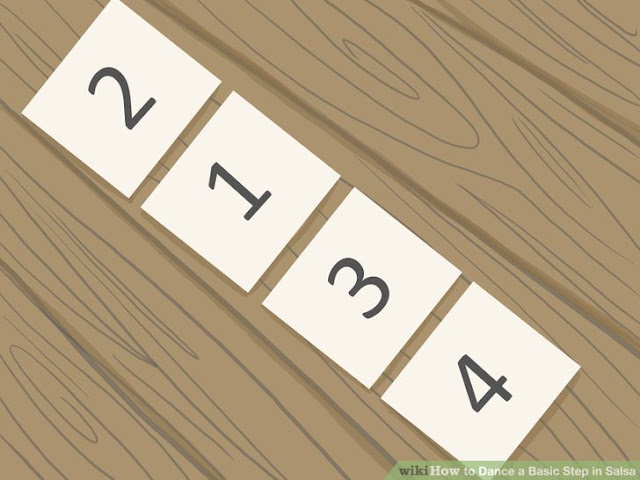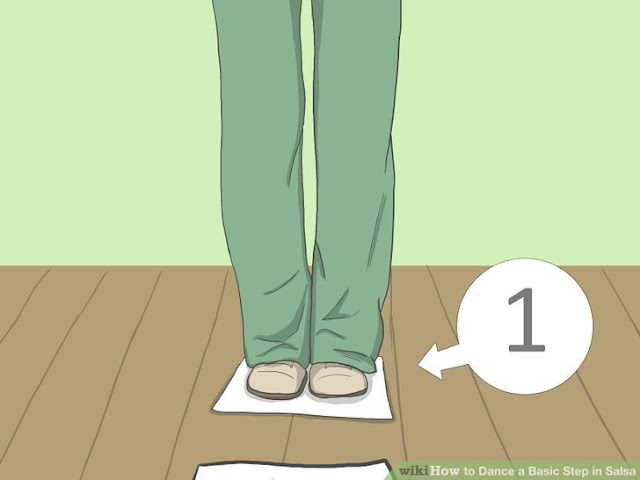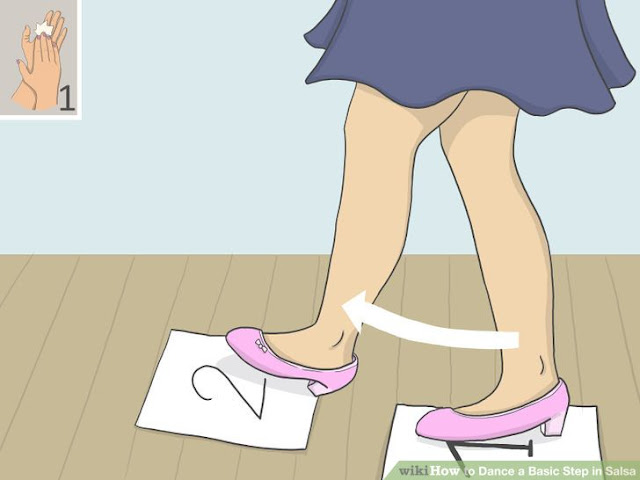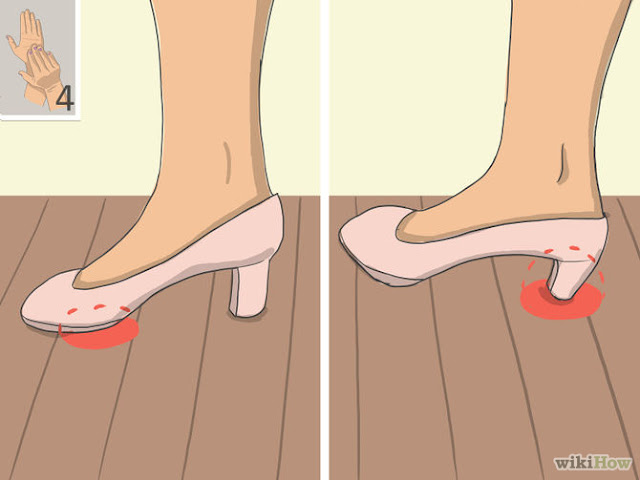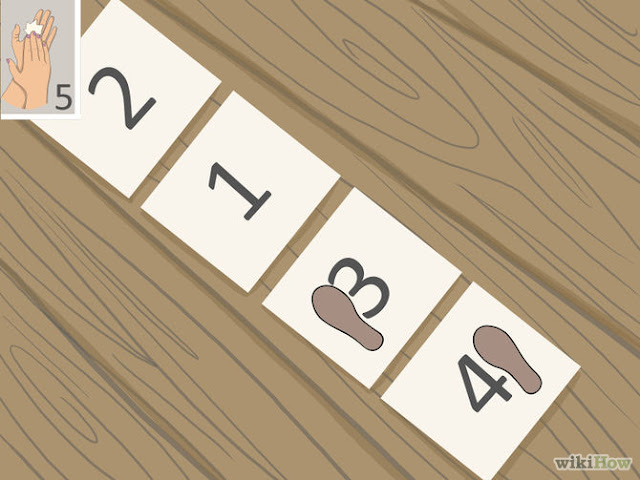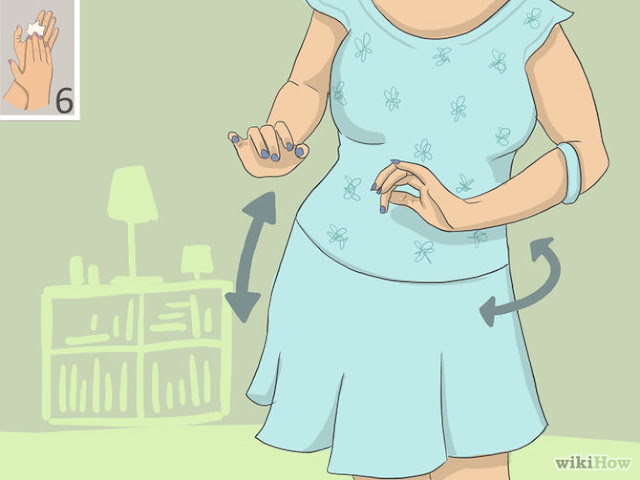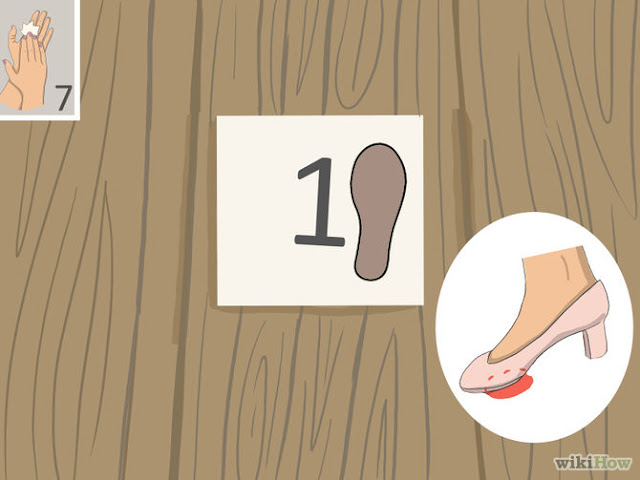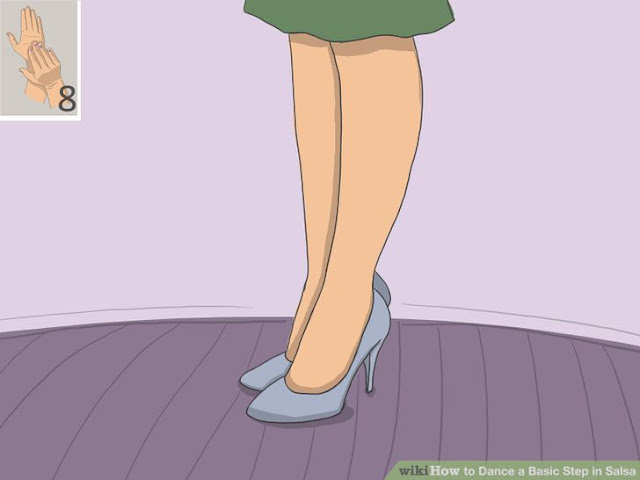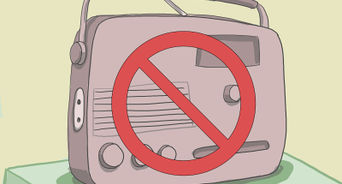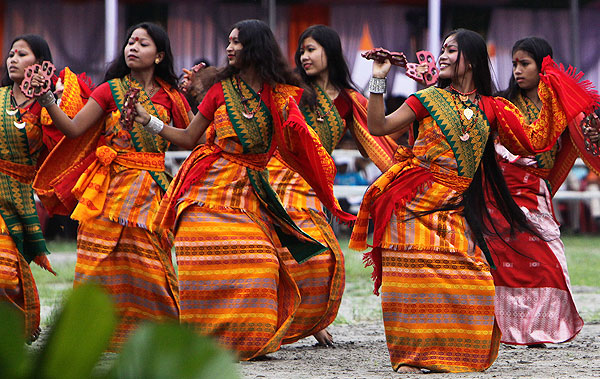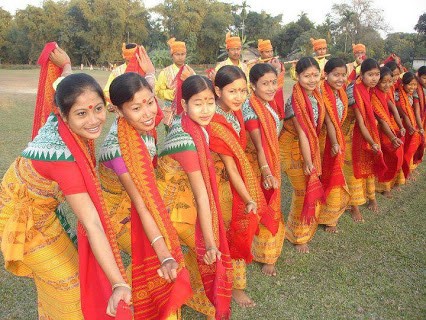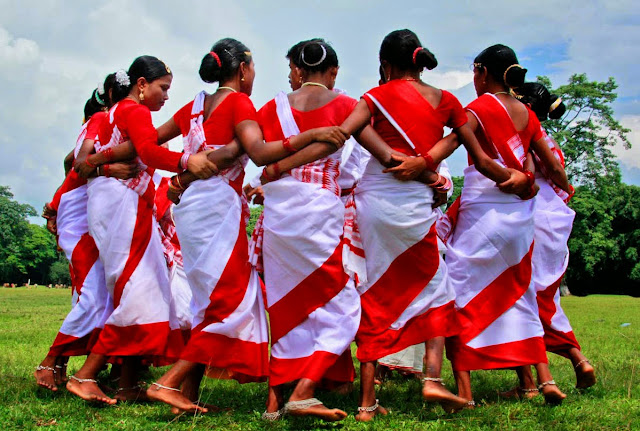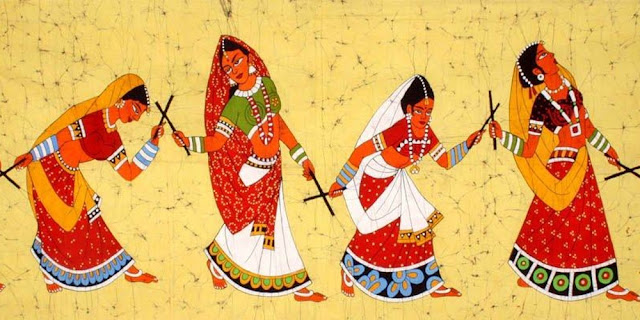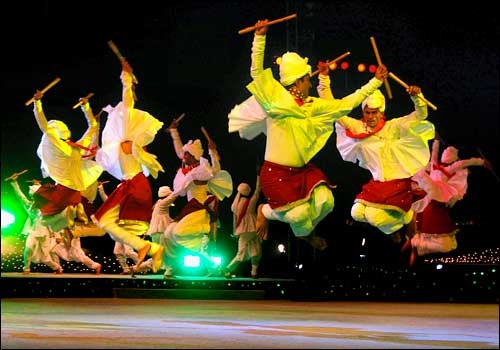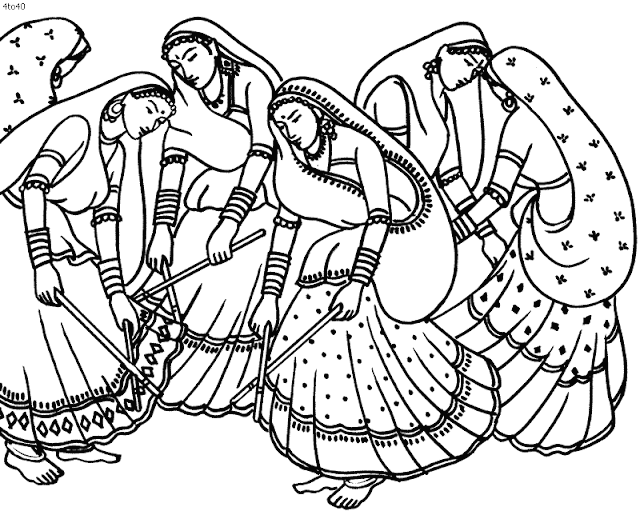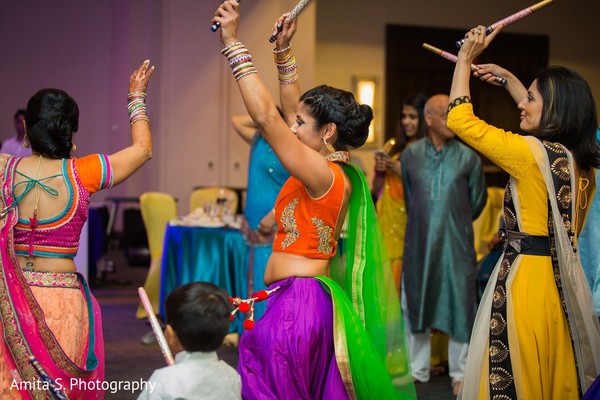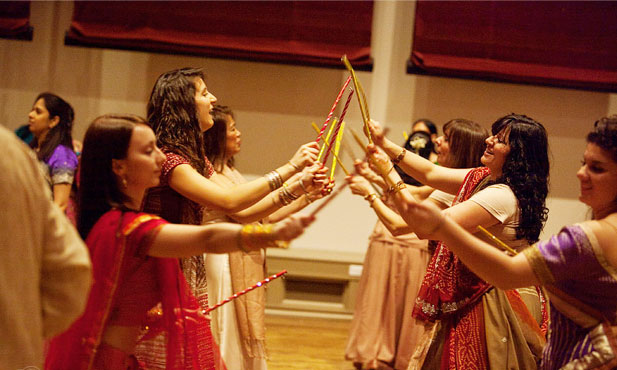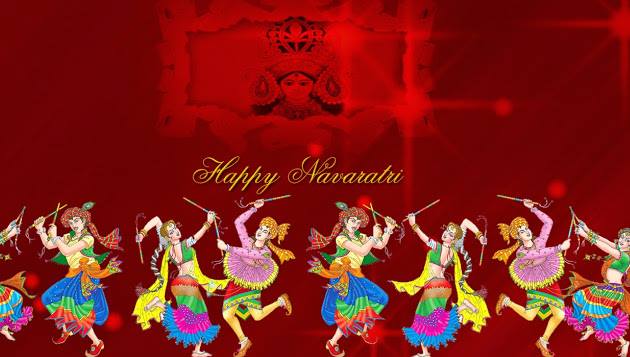How to Dance a Basic Step in Salsa
Salsa is a rhythmic latin dance with its origins in Cuban culture. Salsa dancers move their feet to the beat of the music, and are influenced by the movements of the cha-cha, mambo, and African styles as well. When dancing salsa, dancers often add their own flair by moving their hips and upper body in coordination with the basic foot work.
1 Learning to Count the Music
1 Listen to music to hear the beat. All music has a beat or basic rhythm to it that can be counted. Music has a certain number of beats per measure, which is usually 3,4 or 6 beats. In salsa music there are 4 beats per measure. The basic salsa dance step uses 2 measures of music, or 8 beats.[1]
- Try clapping the rhythm of the music while counting 1-8.
- Beginners should use salsa music that has a slower beat and an accented percussion. This will help you hear the beat in the music.
- Some good starter songs are "Slow Salsa" by Jimmy Bosch, "Cuera Maraca y Bongo" by Los Nemus, "Cosas Nativas" by Frankie Ruiz, or "Yamulemau" by Richie Ray and Bobby Cruz.
2 Clap the rhythm of the steps. The basic salsa step uses 8 beats to complete, however you don’t step on all 8 beats. Your feet move on beats 1,2,3 with a pause on beat 4; you step again on beats 5,6,7 and pause on beat 8.
- Clap when you will be stepping, and don’t clap when you don’t step to understand the rhythm of the dance step.
- The rhythm will be clap-clap-clap-pause-clap-clap-clap-pause. Repeat this rhythm throughout an entire song
3 March the rhythm of the steps. Try standing and marching your feet in place using the salsa rhythm you just clapped. Step your feet down on beats 1, 2, and 3, pausing on beat 4, and repeat the sequence for beats 5 through 8.
2 Dancing The Steps
1 Mark the positions of the steps on the floor. Place numbered cards or sheet of paper on the floor to indicate where to place your feet while you dance.
- Number 1 is your starting position, place it in the middle of the room.
- Number 2 should be placed about 1 foot in front of number 1.
- Number 3 should be placed about 1 foot behind number 1.
- Number 4 should be placed about 1 foot behind number 3.
2 Start the dance with both feet in position 1. When you are ready to begin the salsa dance you will step to the next number.
3 Step forward to number 2 with your left foot on beat . You will alternate which foot you step with for each beat
4 Rock back on your right foot on beat 2. Shift your weight from front to back to shift your body position. Swing your hips slightly to accentuate the movement.
5 Move your left foot back to number 3 on beat 3. Keep your weight on the ball of your foot when you step backwards. You will stay in this position during beat 4.
6 Roll your weight from the ball of your foot to the heel on beat 4. Do not move your feet during beat 4.
7 Step backwards with your right foot to number 4 on beat 5. Keep your left foot in place during step 5.
8 Rock your body weight forward on your left foot on beat 6. Swing your hips as you shift your body weight to help add style to your salsa dance.
9 Step your right foot forward back to number 1 on beat 7. Keep your weight on the ball of your foot as you step your right foot forward.
10 Balance your weight on beat 8. Do not pick up your feet during step 8. This is the last count of the basic salsa step.
11 Practice the steps without music. Count the numbers of the beat and move your feet slowly to master the movement.
- Add music once you are confident in the footwork.



